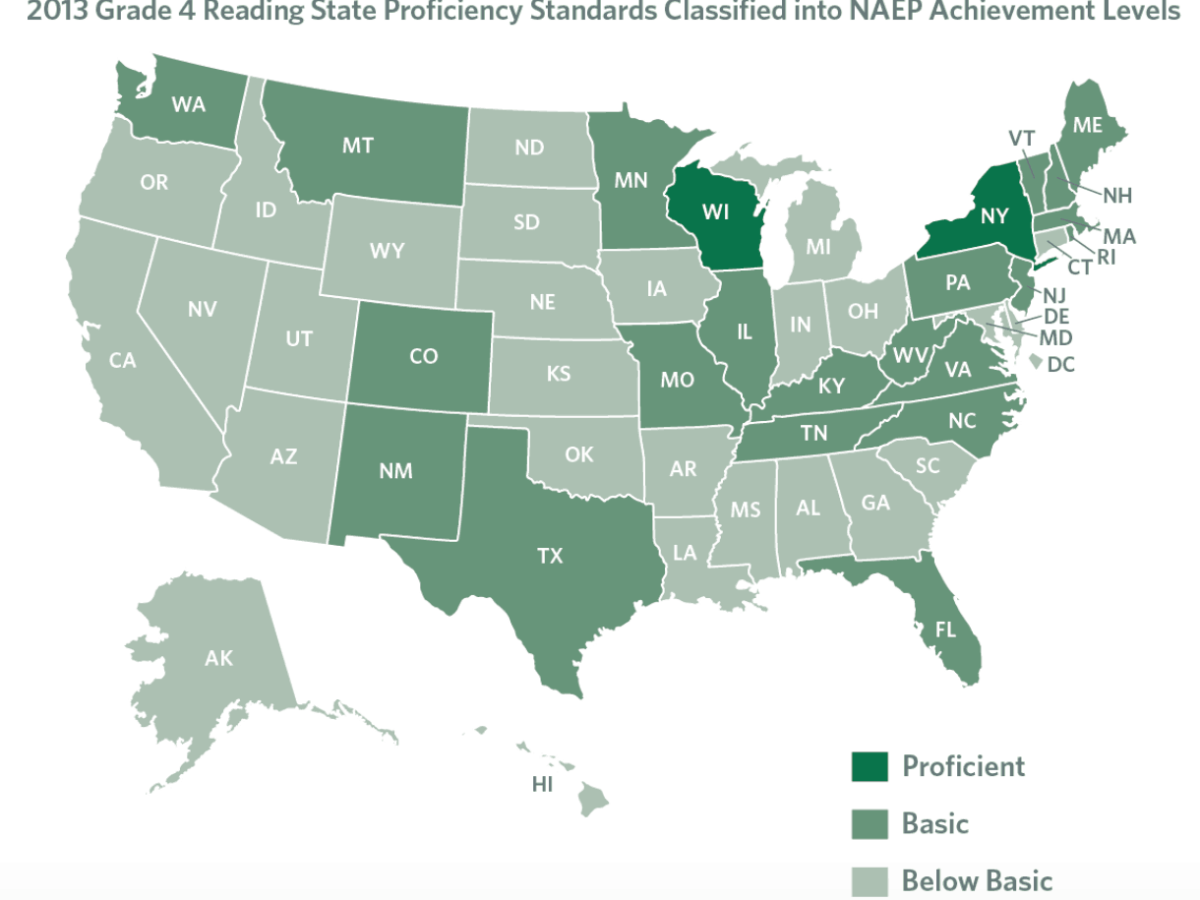

A recent NAEP mapping study gave high marks to North Carolina’s proficiency standards.
According to NAEP’s findings, only Massachusetts, Wisconsin and New York have higher 4th grade proficiency standards for reading.
Only New York, Massachusetts and Texas have higher 4th grade proficiency standards for math.
Only Wisconsin and New York have higher 8th grade reading proficiency standards.
And only New York beats us in 8th grade math proficiency standards.
These results are all for 2013.
The mapping study is done periodically by NAEP to compare state proficiency standards with those it sets in 4th and 8th grade reading and math standards.
Before we continue, a few things you may be asking yourself.
What is a proficiency standard?
Proficiency standards represent the state’s expectations for how well students should do during testing in order to be considered proficient, said Tammy Howard, director of accountability operations for the Department of Public Instruction.
This is important, especially when comparing North Carolina’s standards to NAEP’s. John Hood, president of the John William Pope Foundation, wrote an article that appeared on the John Locke Foundation website. In it, he described the problems that can arise when a state’s proficiency standards don’t relate well with NAEP’s.
“As late as 2011, for example, 72 percent of North Carolina’s 4th-graders were scored by the state as proficient or better in reading. In the same year, only 34 percent of our 4th-graders were scored as proficient or better by NAEP. This was a huge and embarrassing gap,” he said in the article.
The idea is that a state doesn’t want to set the goal so low that our students look good internally but appear inadequate when measured against an outside standard.
So, we’ve seen how North Carolina did in the mapping study when compared to other states. How about when compared to NAEP?
Our reading standards are at NAEP’s “Basic” level, and our math standards are at NAEP’s “Proficient” level.
Is that good? And why should we care?
Let’s take the second question first.
NAEP stands for National Assessment of Educational Progress. According to its website, NAEP “is the largest nationally representative and continuing assessment of what America’s students know and can do in various subject areas.”
In addition to that, NAEP standards are the ones regularly cited by experts when talking about where states should be going with student achievement. For example, former education advisor to Governor Pat McCrory, Eric Guckian, mentioned the following statistic when I talked to him about the mapping study. Sixty five percent of NC students are not meeting the NAEP benchmark for reading by the time they reach 4th grade — meaning they’re not at grade level. He was saying that there is more work to be done, and he’s using NAEP to say it.
Now the first question.
I talked to Grady Wilburn from the National Center for Education Statistics, and he explained NAEP’s definitions of “Proficient” and “Basic.”
He said that for most states, “Proficient” means that a student is at grade level. For NAEP, however, “Proficient” means a student is a little more advanced. “Basic” is NAEP’s version of “at grade level.”
“Our standards are pretty tough. So for a state to have their standards at a NAEP proficient level, their standards are probably above grade level and are mapped to probably what only a small level of students reach,” he said.
He said that in 2013, only about 42 percent of the nation’s 4th graders were at or above proficient in math, and in 8th grade, that number was 35 percent. That’s “proficient” in NAEP standards.
For reading, the numbers were 35 percent for 4th grade and 36 percent for 8th grade.
And in case you are wondering, as I did, if there is a NAEP rating higher than proficient, there is. No state approached NAEP’s higher standard. Proficient was as close as anyone reached.
Hood concluded his article on the NAEP mapping results this way.
“In the past, North Carolina’s standards and accountability system set the bar way too low. We pretended that our students were truly prepared for the demands of college, career, or citizenship despite the fact that many of them lacked basic reading and math skills.
“That’s no longer true, particularly in math. And that’s real progress.”
Click here, here and here to see NAEP’s achievement level descriptions overall, for math, and for reading, respectively.


